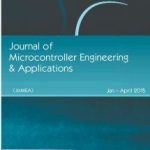[{“box”:0,”content”:”[if 992 equals=”Open Access”]n
n
Open Access
nn
n
n[/if 992]n
n
n
n
n

n
Sarthak Gangurde, Kalyani Jngale, Mayuri Jaurkae, S.A. Koti
n
- n t
n
n
n[/foreach]
n
n[if 2099 not_equal=”Yes”]n
- [foreach 286] [if 1175 not_equal=””]n t
- Student, Student, Student, Professor Department of Electronics and Telecommunication Engineering, Sinhgad College of Engineering, Pune, Department of Electronics and Telecommunication Engineering, Sinhgad College of Engineering, Pune, Department of Electronics and Telecommunication Engineering, Sinhgad College of Engineering, Pune, Department of Electronics and Telecommunication Engineering, Sinhgad College of Engineering, Pune Maharashtra, Maharashtra, Maharashtra, Maharashtra India, India, India, India
n[/if 1175][/foreach]
n[/if 2099][if 2099 equals=”Yes”][/if 2099]n
Abstract
nThe issue of maintaining clean cosmopolises is becoming increasingly important as smart cosmopolises emerge. The amount of scrap generated is excessive, and the labor-intensive physical labor required to make it is extremely tiresome. As technology advances in all areas, automated methods might be promoted to assist with the scrap pile. The purpose of the trash segregator is to make it easier to dispose of collected waste. Three lockers—one for wet garbage, one for substances, and one for dry waste—make up the system. The conveyer belt system recognizes the incoming garbage, uses several system-connected sensors to classify it as dry or wet material, and then deflects it into a different container. The servo motors, programmed in accordance with the working, carry out the divagation method. This makes it easier to recover various waste types based on demand. The ultrasonic sensors found in each bin are used to cover the scrap position in each locker. Additionally, the advertisement is forwarded to the relevant authorities so they can empty the trash can. Because the entire system is automated, less human interaction is needed to separate the waste, and the scrap is successfully collected from the bin at the appropriate time.
n
Keywords: Smart Dustbin, Segregation, solid waste segregation, collection and detection, Automatic Segregation.
n[if 424 equals=”Regular Issue”][This article belongs to Journal of Microcontroller Engineering and Applications(jomea)]
n
n

n
n
n
nn[if 992 equals=”Open Access”] Full Text PDF Download[/if 992] n[if 992 not_equal=”Open Access”]
[/if 992]n[if 992 not_equal=”Open Access”] nnn[/if 992]nn[if 379 not_equal=””]n
Browse Figures
n
n
n[/if 379]n
References
n[if 1104 equals=””]n
[1]BelalChowdhury, Morshed U Chowdhury “RFIDbased Real-time Smart Waste Management System”, in 2007 Australasian Telecommunication Networks and Applications Conference December 2nd – 5th 2007, Christchurch, New Zealand.
[2] SauroLonghi, DavideMarzioni†, EmanueleAlidor, Gianluca Di Bu` o, Mario Prist, Massimo Grisostomi and MatteoPirro “Solid Waste Management Architecture using Wireless Sensor Network technology” in Universit`aPolitecnicadelle Marche, Dipartimento di Ingegneriadell’Informazione Via BrecceBianche.snc,60131 Ancona, Italy 2012.
[3]ShubhamThakker, R.Narayanamoorthi, “Smart and Wireless Waste Management” in IEEE Sponsored 2nd International Conference on Innovations in Information Embedded and Communication Systems 2015.
[4] Andrei Borozdukhin, Olga Dolinina and VitalyPechenkin, “Approach to the Garbage Collection in the Smart Clean City Project” in, Yuri Gagarin State Technical University of Saratov, Saratov, Russia 2016.
[5] Thompson A.F, Afolayan A.H, Ibidunmoye E.O,”Application of Geographic Information System toSolid Waste Management” in Pan African International Conference on Information Science, Computing andTelecommunications (2013).
[6] Abhay Shankar Bharadwaj, Rainer Rego, AnirbanChowdhury, “IoT Based Solid Waste Management System” in Frugal Labs Tech Solutions Private Limited, Bengaluru, Karnataka, India 2016.
[7] Jetendra Joshi, Joshitha Reddy, Praneeth Reddy, Akshay Agarwal, Rahul Agarwal, Amrit Bagga, and Abhinandan Bhargava,” Cloud Computing Based Smart Garbage Monitoring System” in 2016 3rd International Conference on Electronic Design (ICED), August 11-12, 2016, Phuket, Thailand.
[8] Dr.N.Sathish Kumar, B.Vijaylakshmi, R. Jenifer Prathana, A. Shankar, “IOT Based Smart Garbage alert system using Arduino UNO” IEEE 2016.
[9] GaikwadPrajakta, JadhavKalyani, MachaleSnehal, “Smart Garbage Collection System in Residential Area” in IJRET: International Journal of Research in Engineering and Technology, March 2015.
[10] Kanchan Mahajan, Prof.J.S.Chitode, “Waste Bin Monitoring System Using Integrated Technologies” in IJERT: International Journal of Innovative Research in Science, Engineering and Technology, July 2014.
nn[/if 1104][if 1104 not_equal=””]n
- [foreach 1102]n t
- [if 1106 equals=””], [/if 1106][if 1106 not_equal=””],[/if 1106]
n[/foreach]
n[/if 1104]
nn
nn[if 1114 equals=”Yes”]n
n[/if 1114]
n
n

n
Journal of Microcontroller Engineering and Applications
n
n
n
n
n
n
| Volume | 11 | |
| [if 424 equals=”Regular Issue”]Issue[/if 424][if 424 equals=”Special Issue”]Special Issue[/if 424] [if 424 equals=”Conference”][/if 424] | 01 | |
| Received | May 7, 2024 | |
| Accepted | May 18, 2024 | |
| Published | June 4, 2024 |
n
n
n
n
n
n function myFunction2() {n var x = document.getElementById(“browsefigure”);n if (x.style.display === “block”) {n x.style.display = “none”;n }n else { x.style.display = “Block”; }n }n document.querySelector(“.prevBtn”).addEventListener(“click”, () => {n changeSlides(-1);n });n document.querySelector(“.nextBtn”).addEventListener(“click”, () => {n changeSlides(1);n });n var slideIndex = 1;n showSlides(slideIndex);n function changeSlides(n) {n showSlides((slideIndex += n));n }n function currentSlide(n) {n showSlides((slideIndex = n));n }n function showSlides(n) {n var i;n var slides = document.getElementsByClassName(“Slide”);n var dots = document.getElementsByClassName(“Navdot”);n if (n > slides.length) { slideIndex = 1; }n if (n (item.style.display = “none”));n Array.from(dots).forEach(n item => (item.className = item.className.replace(” selected”, “”))n );n slides[slideIndex – 1].style.display = “block”;n dots[slideIndex – 1].className += ” selected”;n }n”}]





